Think You Know a Thing or Two About Wasabi?
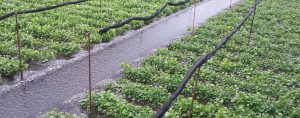
Yes, you probably recognize that green blob of paste sitting next to your sashimi. You might know wasabi starts out as a bumpy root-looking thing. Like most people you are likely well aware that the stuff can set your nose on fire.
But for many people, their knowledge stops there. Such was the case with me; I spent years burning my nose before realizing I didn’t know much about this spicy little devil. Then I visited the Daio Wasabi Farm in Azumino, right up the road from Matsumoto.
Daio is a sprawling display of meticulous farming methods and pristine natural resources. Crystal-clear streams flow from underground into a network of sculpted rows of pebbles, diverting 120,000 tons of water every day to the three to four hundred thousand wasabi plants that grow in winding river-like fields. Wasabi requires continuously-flowing water for cultivation, but even a touch too much water can wash the plants away. So as you explore the farm take a moment to appreciate the work all those pebbles are doing.
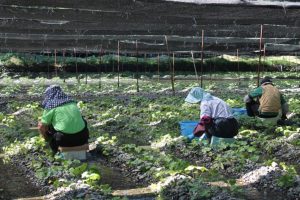
But don’t give them all the credit. At Daio, there are only about twenty employees tasked with planting and harvesting all those hundreds of thousands of wasabi plants by hand. Depending on your timing you may get to see a few of them down in the fields. At a glance they might not seem to be moving real fast, but consider: Daio produces approximately one hundred thirty tons of wasabi annually – about ten percent of Japan’s total output. Intrude for a photo of them at your own risk.
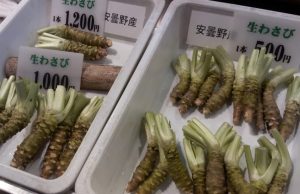
The part of the wasabi plant used to make the wasabi for your sashimi is the stem, not the root as many mistakenly believe (as I did for years). And while the stuff you get at the supermarket may pack a fair punch, wasabi actually loses a lot of its zing soon after it is grated. (This can be a blessing or a disappointment, depending on your threshold for pain.) Sushi masters will also tell you wasabi has a sweetness to it, which also quickly wanes once the stem is ground into that distinctive paste. (This may be something that has to be experienced to be believed!)
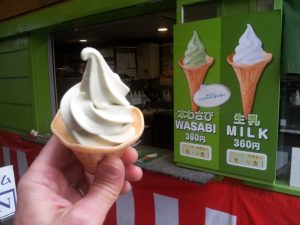
If you want to grate your own fresh wasabi, head for the Daio gift shop where you can pick up a wasabi grater made with shark skin – the professionals’ material of choice – for around three thousand yen. Of course, there is also plenty of fresh wasabi on hand, along with a multitude of other wasabi-injected products including crackers, soba noodles, sausage, dressing, juice and chocolate.
Outside the gift shop you can fill up on wasabi burgers, wasabi croquettes, wasabi ice cream and wasabi beer. Up the path you’ll find the Daio Restaurant with a full menu of wasabi-laced dishes.
For a look at more of the work that goes into the production of wasabi take a peek through the large picture windows of the “wasabi factory”, where workers separatie the leaves from the stems from the thin stringy roots. You might even be able to try your hand at making wasabizuke, a blend of chopped wasabi leaves, upper stems and sake kasu, a by-product of the sake-making process. Inquire at the information desk.
The Life and Times of Daio
The Daio grounds once resembled a muddy wasteland. Check out the old photographs in the wasabi museum to the right of the farm’s main entrance, or the large picture on the wall outside the shop, to see what the place looked like 100 years ago when the locals were just beginning the ten-year process of turning the muddy land into what it is today.
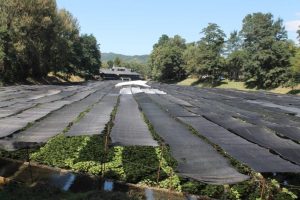
From as early as May to as late as October the wasabi fields are covered with long black canopies to protect the plants from the sun – though you can still get a good look at the intricacies of wasabi-growing. Through the cold winter the spring water remains a constant and crucial 13 degrees Celsius. Plum and cherry blossoms in Spring and the changing of the leaves in Fall lend extra color to the farm’s extensive agri-scape. And you can explore the place for free all year.
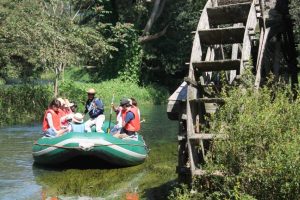
The Daio Farm has also been the setting of several movie and television productions, perhaps most notably Akira Kurosawa’s 1989 film Dreams. The waterwheel mills you see along the stream near the northern edge of the grounds were built specifically for the film. Your best chance at getting a good photo of them is to board a glass-bottom boat. (Warning: for the 15-minute, 900 yen tour you’ll be expected to help row the boat. Seriously.)
The quiet atmosphere and the gentle walking trails of the Daio farm make for an eminently enjoyable – and unique – side trip into the Japanese countryside. The free maps available at the entrance to the grounds may suggest a few walking routes, but pick your own direction and discover the place for yourself.
Getting There
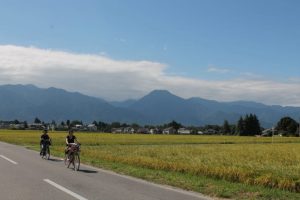 From Matsumoto to the south or Nagano to the north, take the Shinanoi Line to Hotaka Station. Daio is about 2.5km to the east. The way is well-marked for those who choose to walk. The taxi drivers need to hear no more than ‘Daio Wasabi’ to know where to take you (for around 1,200 yen). The friendly folks at the information desk can help you get a return taxi as well.
From Matsumoto to the south or Nagano to the north, take the Shinanoi Line to Hotaka Station. Daio is about 2.5km to the east. The way is well-marked for those who choose to walk. The taxi drivers need to hear no more than ‘Daio Wasabi’ to know where to take you (for around 1,200 yen). The friendly folks at the information desk can help you get a return taxi as well.
But the most enjoyable option (in this writer’s experienced opinion) is renting a bicycle from RTY, not a hundred meters from the train station steps. Sometimes one of the guys will be right there outside the station, ready to put you on a bike and point you in the right direction. Their service always comes with a smile, but for an extra laugh tell them Kevin sent you.
Entry to Daio Wasabi Farm is FREE!
Open daily 9:00am – 5:00pm (4:30pm Nov-Feb)
Tel: 0263-82-2118
Address: 3640 Hotaka, Azumino City, Nagano 399-8303